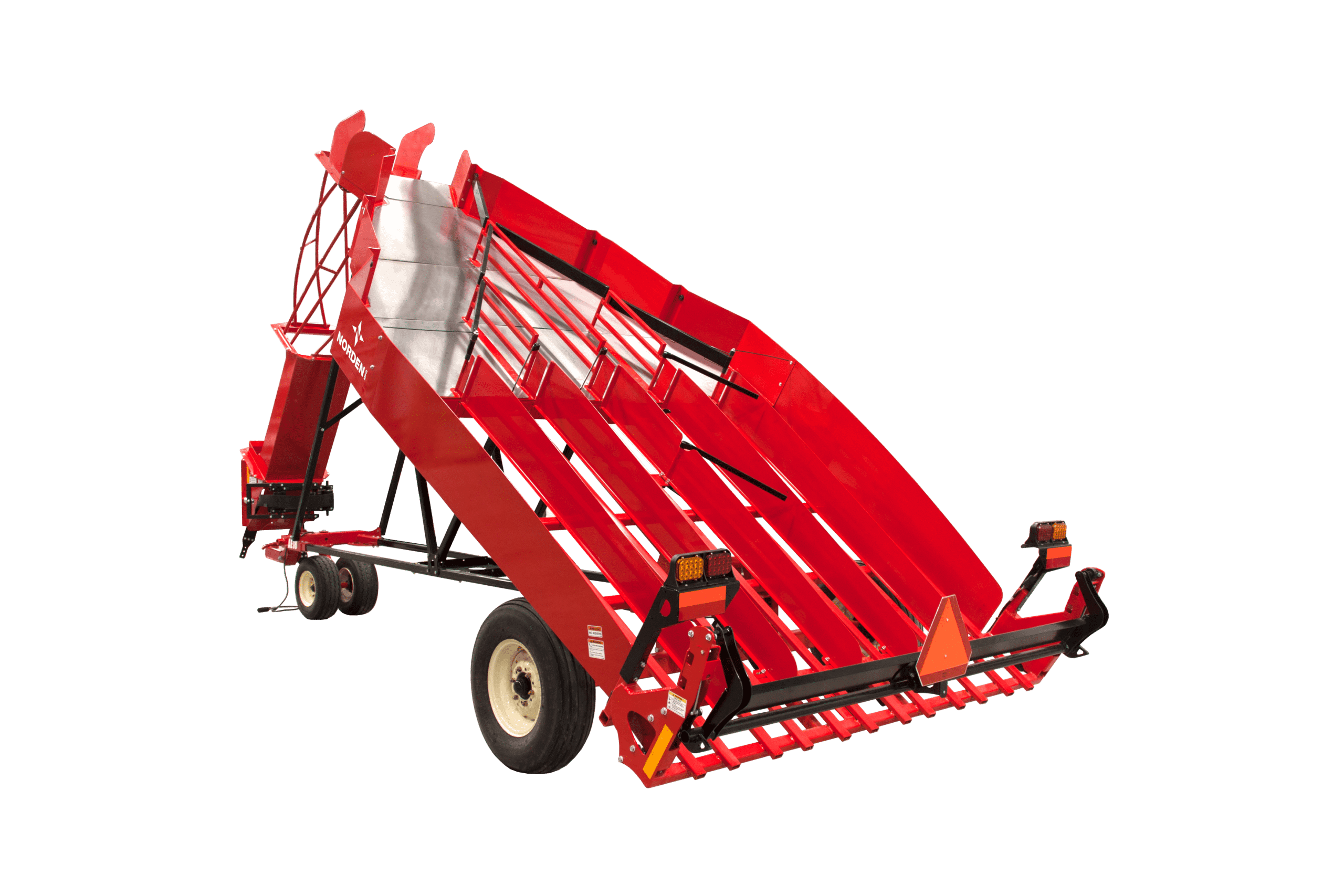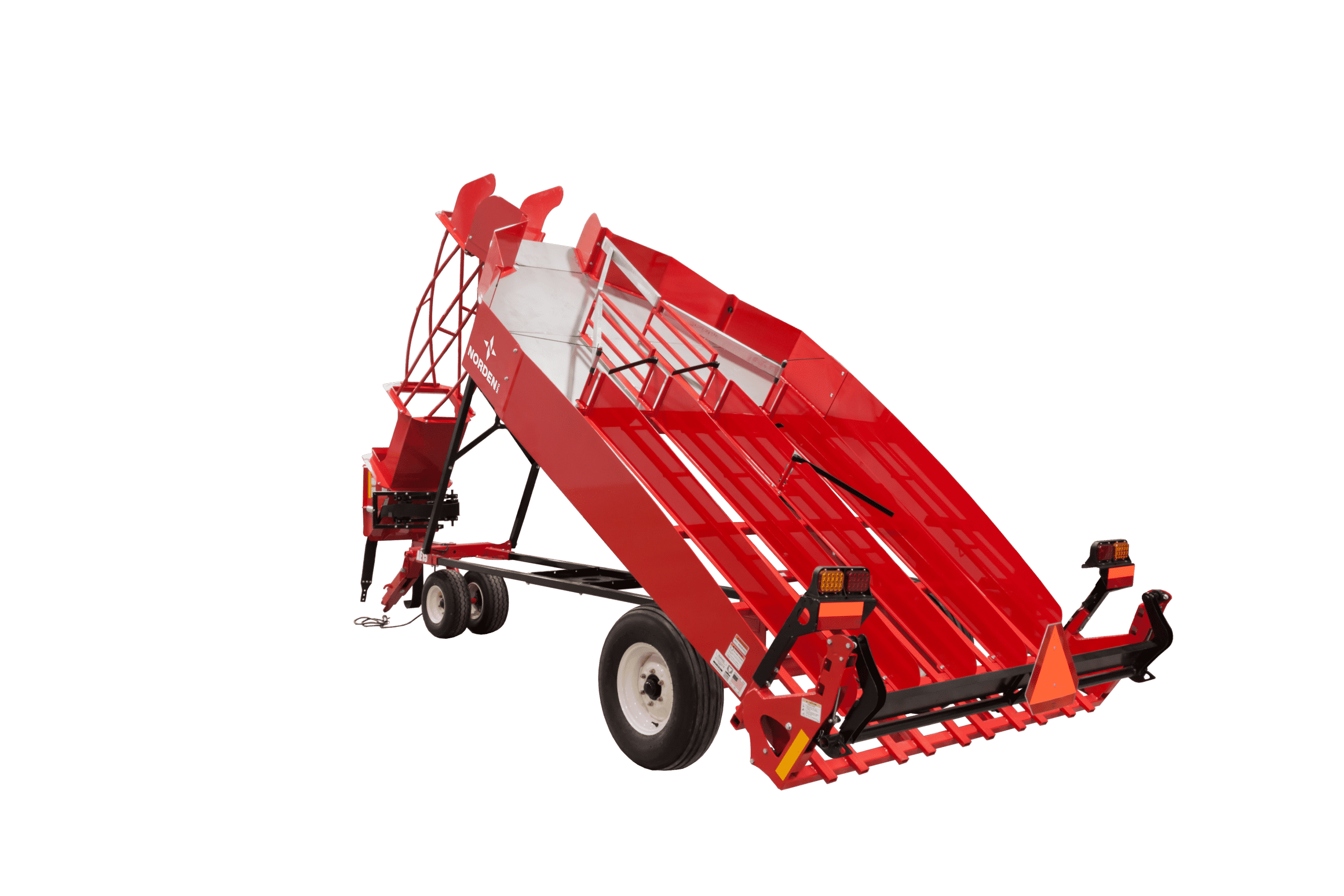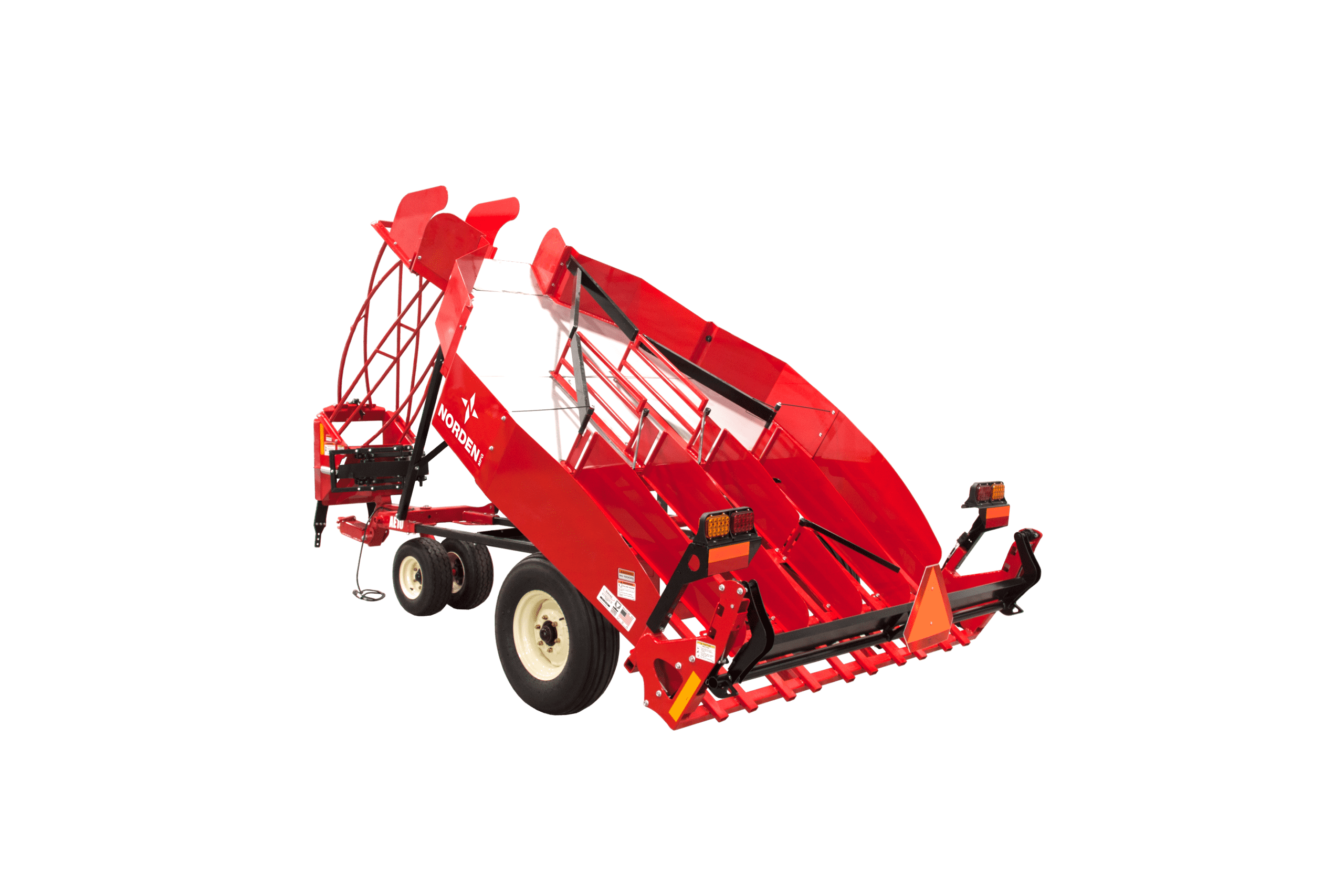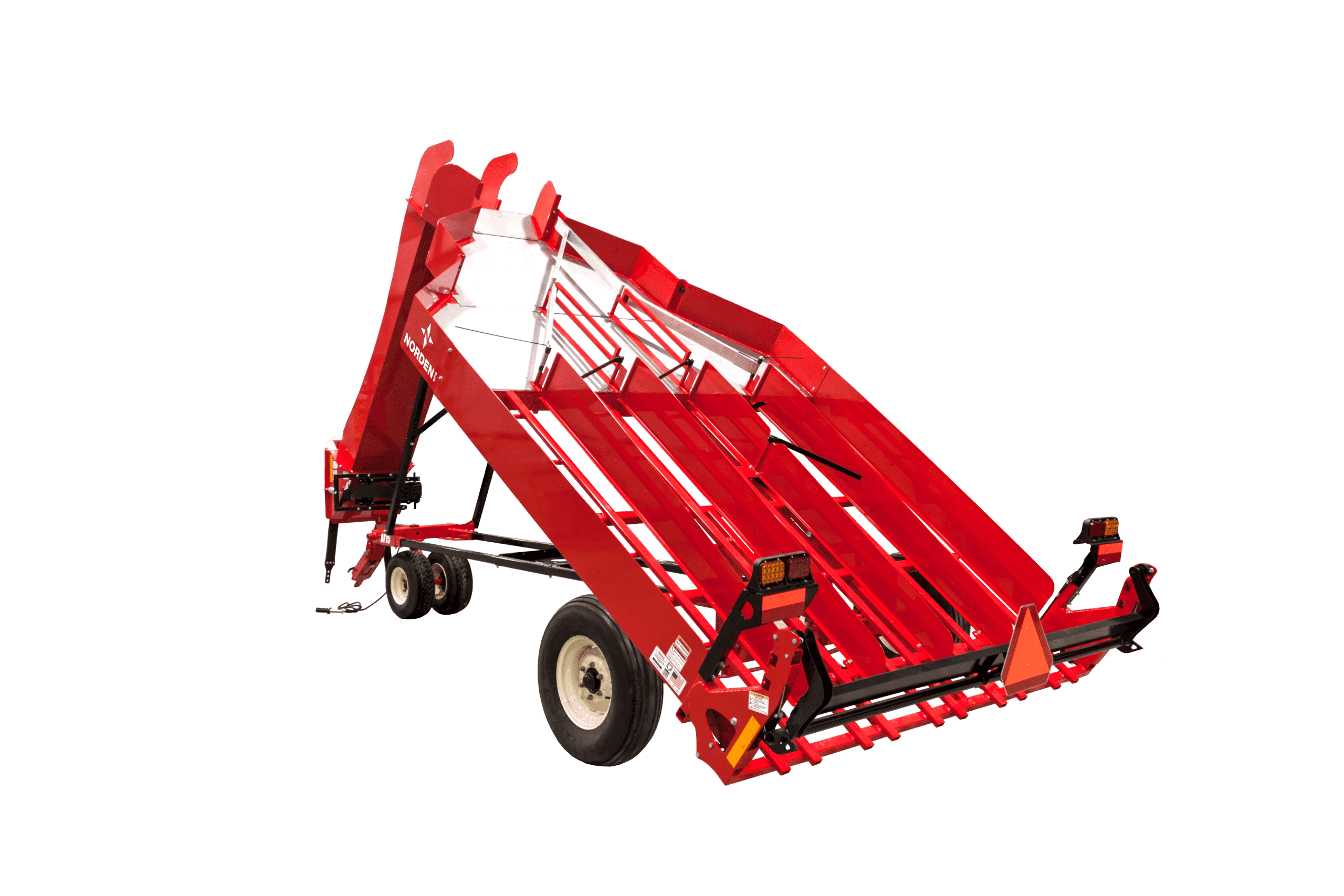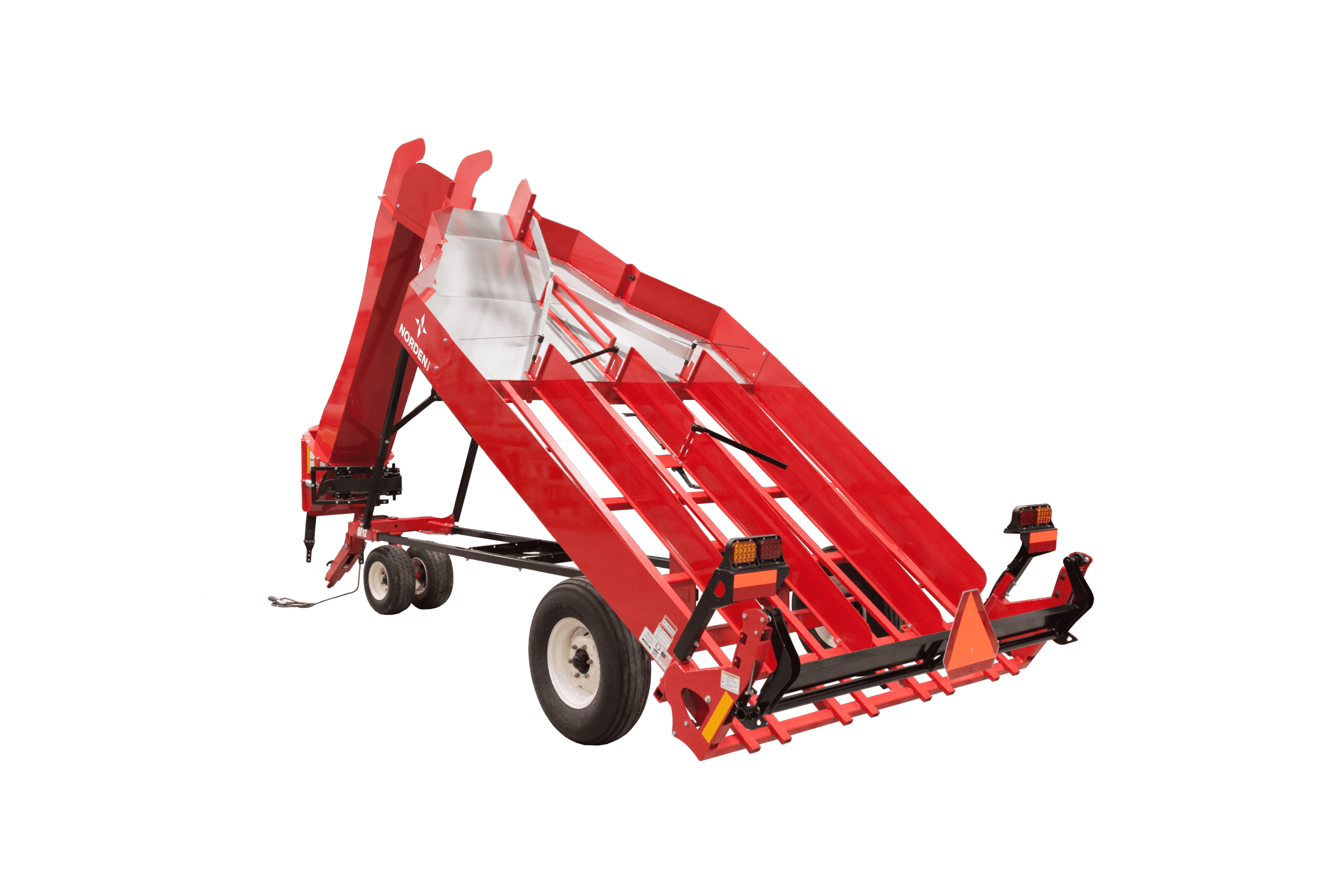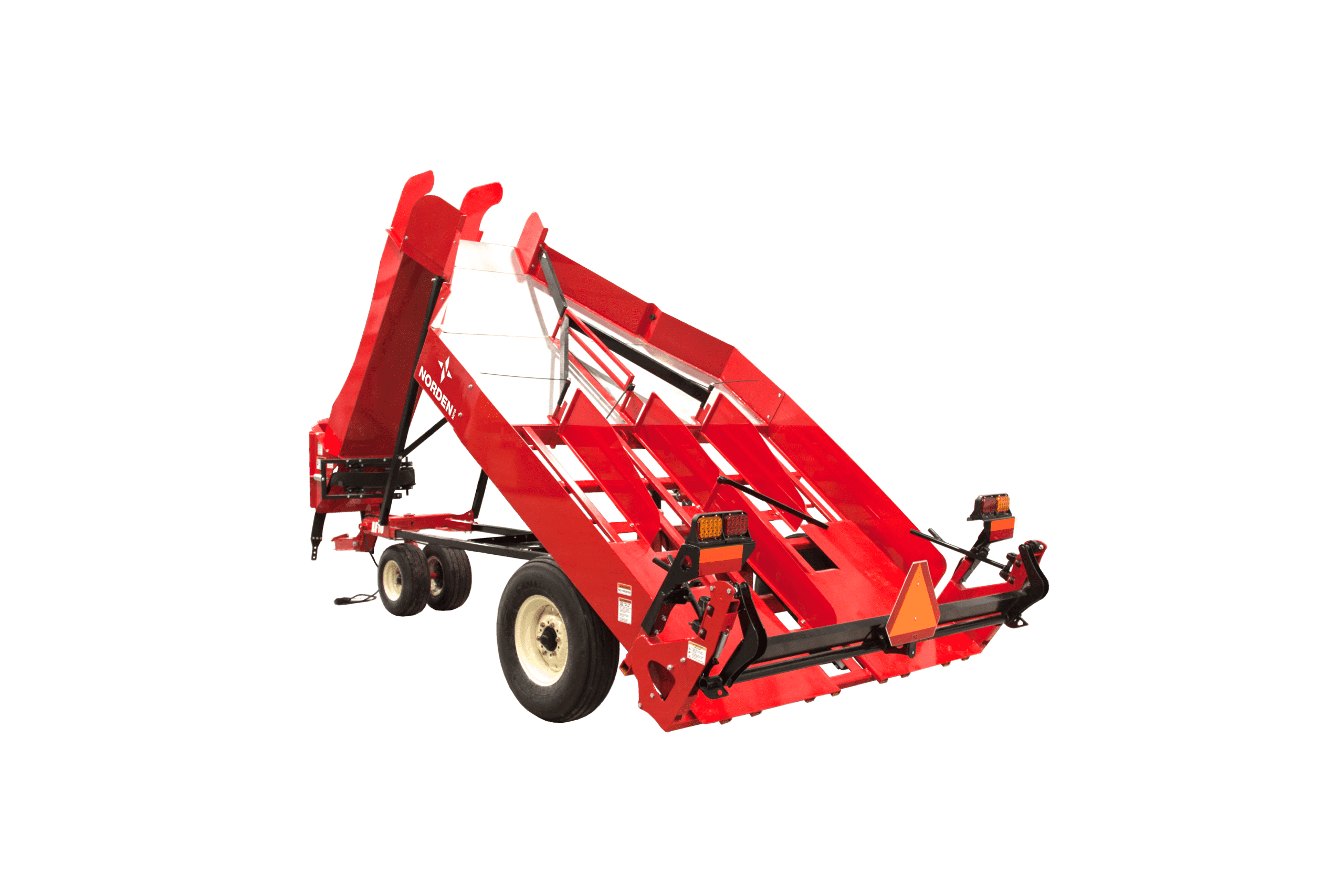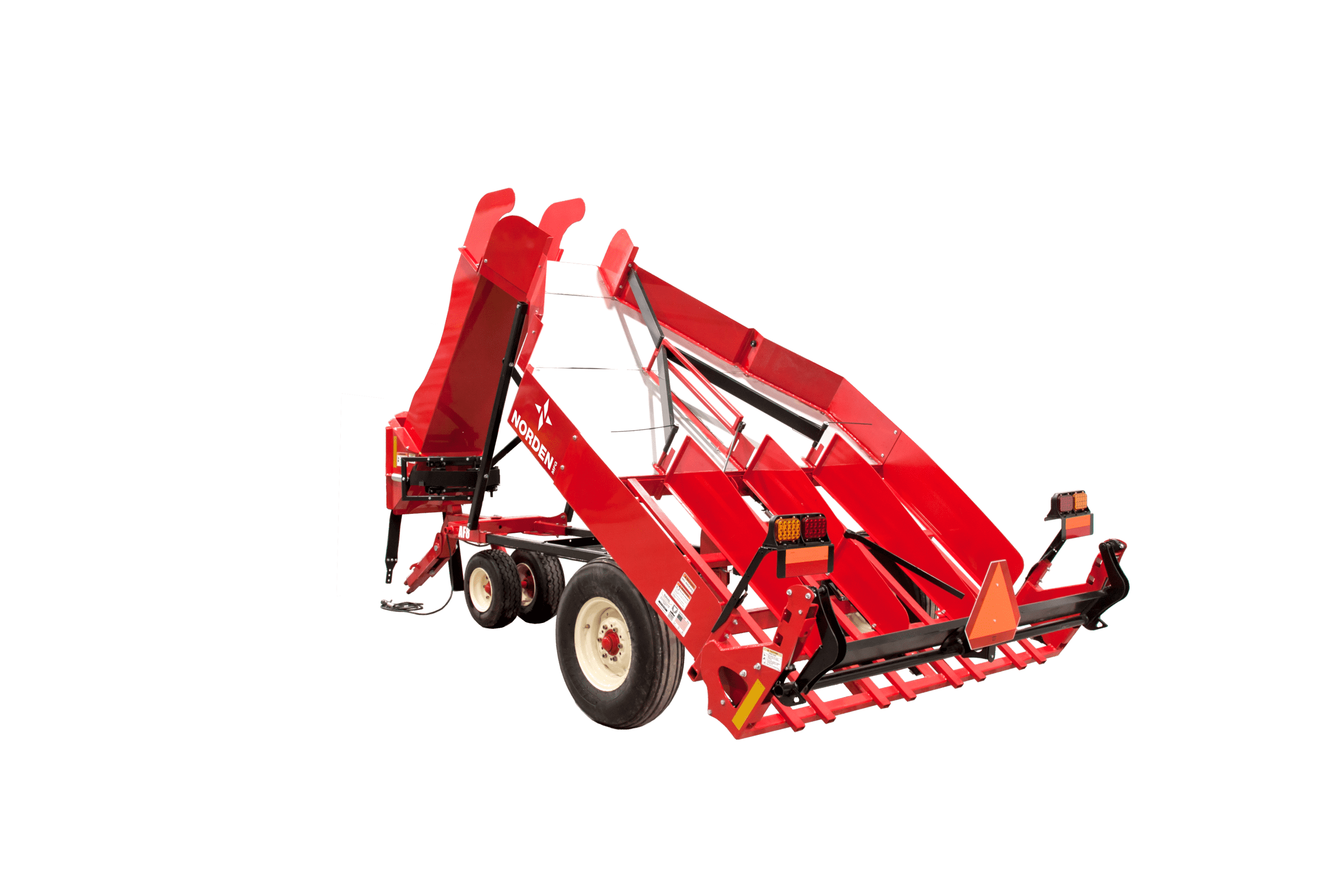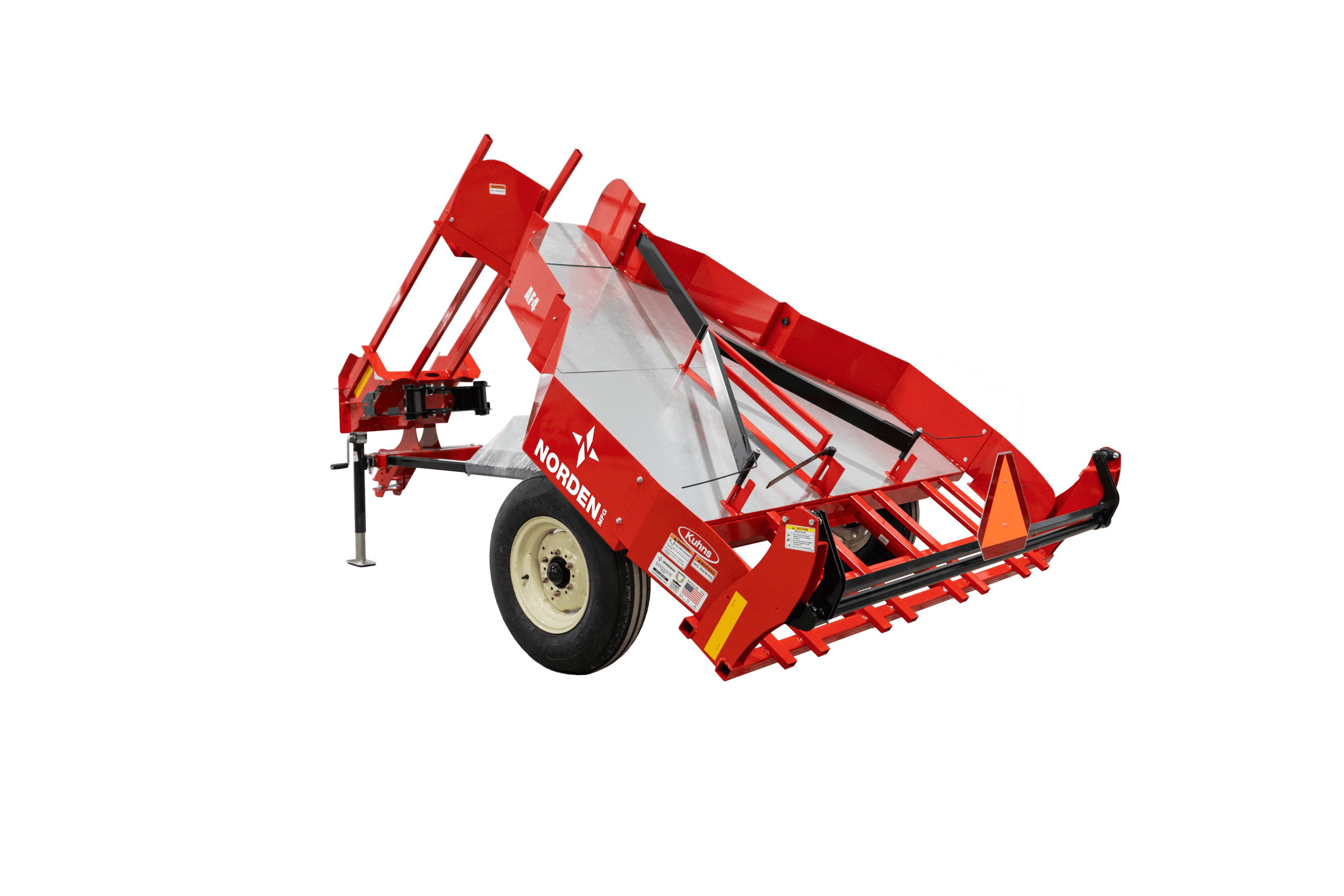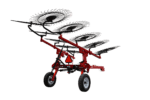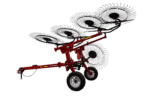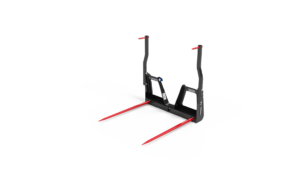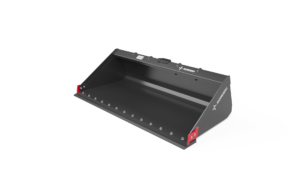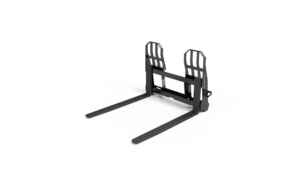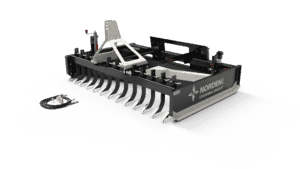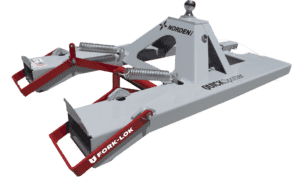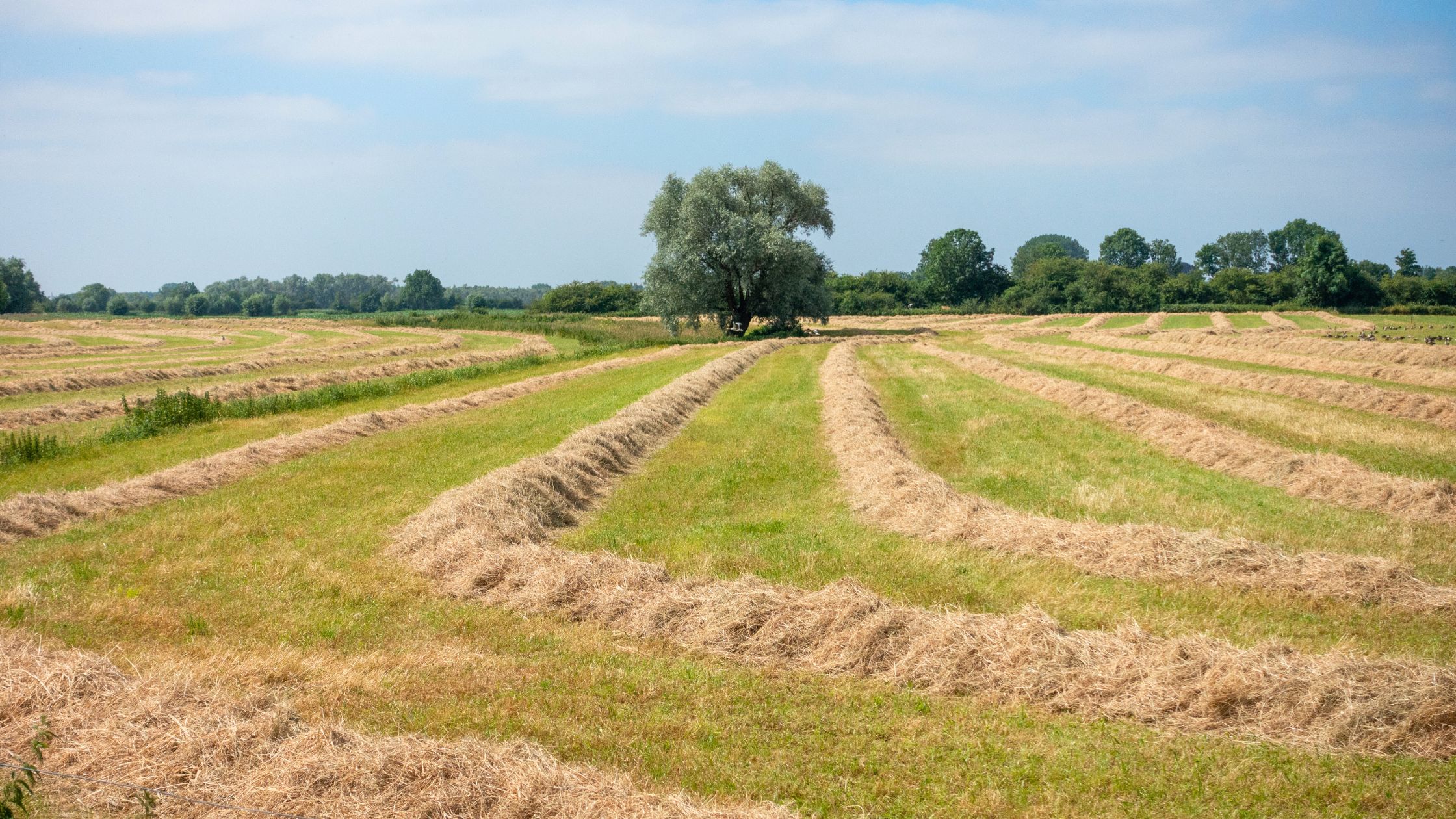
Hay DAy For Horses: The Importance of Equine Forage
By Amanda Barnum (Extension State Agriculture and Natural Resources Educator)
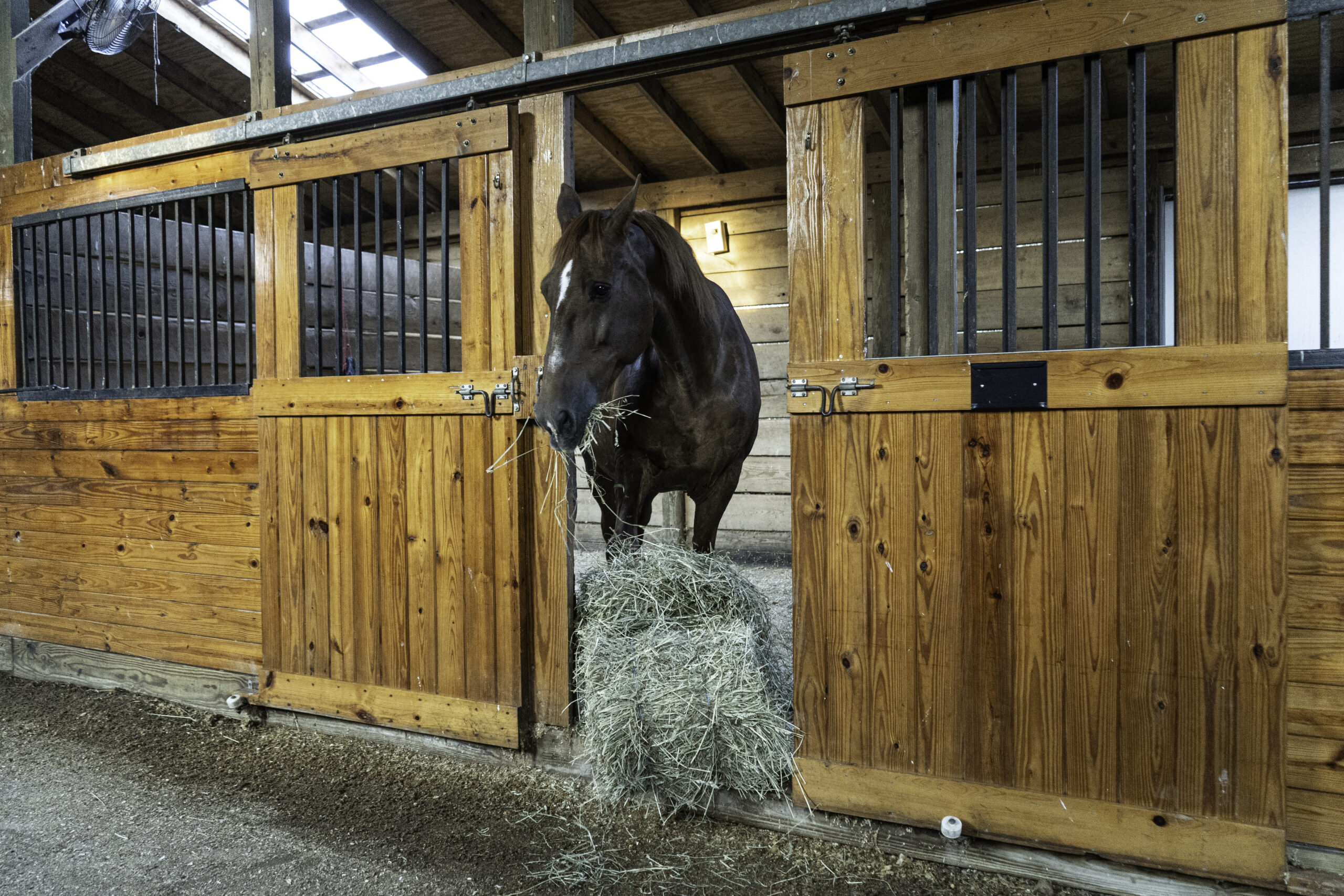
Looking for Kuhns MFG?
We’ve rebranded as Norden MFG! Same ownership, same great products, brand new name.
Forage with horses. Why is it important? There is a common misconception that horses can just be fed grain to get all their nutritional requirements. A horse can strive for excellence with a well-planned forage!
Good quality hay provides ample nutrients to meet the needs of most horses. By optimizing forages in the diet, it will result in healthier horses and help reduce cost. Yes, you can reduce cost when it comes to horses. Not a common statement in the horse world. Their digestive tract is designed to use forages as their main diet.
Understanding A Horse’s DIgestive System
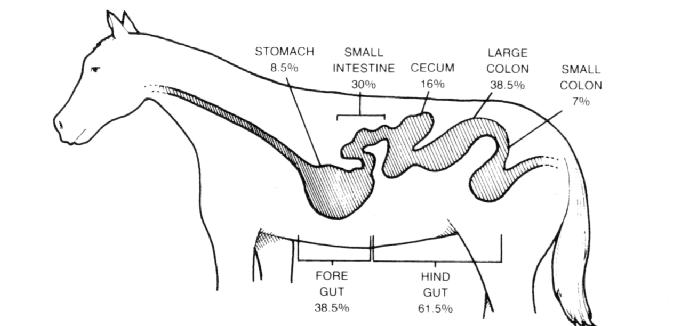
Horses are hind gut fermenters. This includes the cecum, large and small colon where most of the forages will be digested. Due to the bacterial presence in the gut, and size of the fore and hind gut, digesting forages primarily will reduce problems that can occur. This is important for overall health, colic prevention, reducing ulcers, and help with teeth health.
How To Feed Hay To Horses
To know how much hay to feed to a horse, it is important to first evaluate the body condition score. Horse owners will look at the score set from 1-9 with 5 being ideal. It is important to watch the horse’s weight and make notation on how they are performing.
Horses should be fed by weight of hay, not flake. Minium Dry Matter intake of 1.5% of body weight per day. For example, 1,000lb x 0.015 = 15lb DM per Day. This percentage will increase depending on the use of the horse. This is important to discuss with a nutritionist.
Intake of dry matter will depend on the purpose and use of the horse. If they are an active performance horse, they should be having an increased amount of dry matter. This of course can vary between individuals. It is important to work with a professional nutritionist for this evaluation.
Forage Testing for Horses
It is important to send a forage analysis in to a testing facility to determine what nutritional value is in the bale fed. This will enable you to optimize rations to improve overall animal health. Below are components that will be a part of the evaluation.
| DM | Dry matter: the nutrients without water | ~85% |
| Moisture | The amount of water in the hay | 11-16% |
| CP | Crude protein: amount of protein in the hay | 8-20% |
| ADF | Acid detergent fiber (cellulose + lignin): a measurement of fiber | 30-45% |
| NDF | Neutral detergent fiber (hemicellulose + cellulose + lignin): a measurement of fiber | 40-65% |
| NSC | Non-structural carbohydrates: a measurement of simple sugars and starch. Subsets of this include WSC, ESC, and NFC. | 5-25+% |
| DE | Digestible energy: amount of energy digested and used by the horse | 0.75-1.0 Mcal/lb |
| RFV | Overall score for your hay based on digestibility and calories. Used less in equine. | 75-180 |
| Ca | Calcium Percentage | 0.2% |
| Phosphorous | Phosphorous Percentage | 0.1% |
Source: https://extension.psu.edu/understanding-a-hay-analysis
Nutrient Requirements Compared to Composition of Forages
When looking at hay production, it is important to consider the stage of development before harvesting hay. Quality is based on maturity of plant, any damages and how the hay is dried. Having a mixed hay is ideal due to legumes being higher in protein and calcium compared to grass hay being lower in calcium and protein but high in fiber. See chart below of values compared with grass and legumes and stage of maturity during harvest.
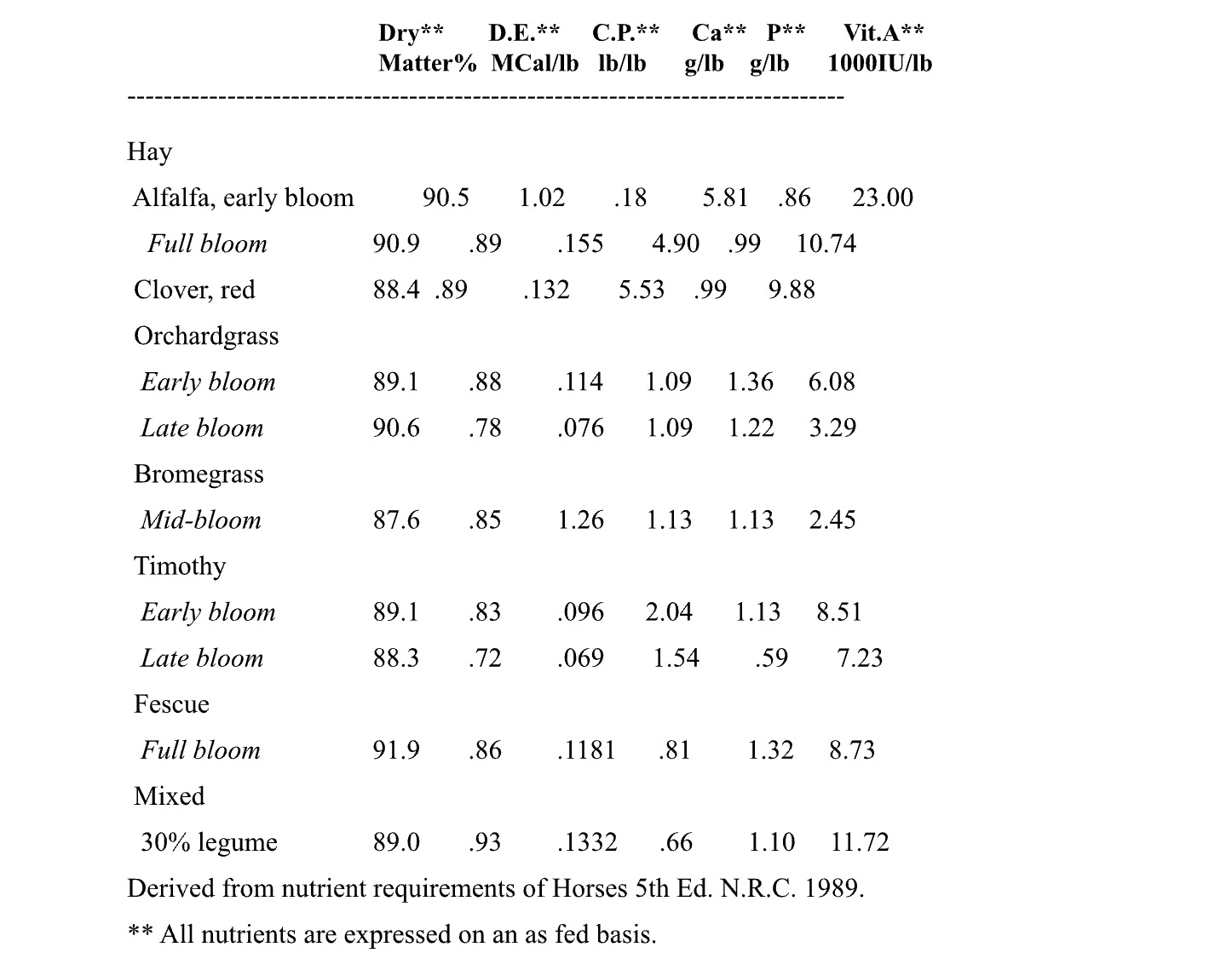
Source: https://www.extension.purdue.edu/extmedia/as/as-429.html
Evaluating Your Hay for Horses
It is critical to make sure you’re feeding the correct forage to horses. For example, Ionophores use as a feed additive for cattle is highly toxic to horses. You do not want the forage to cause injury. Foxtails are known to cause ulcerations in the mouth. Hay should also be free of poisonous plants.
Visual inspection is important and what is use most for evaluations. It needs to show great color, free of mold and foreign matter and present leafiness.
When it comes to the horses eating the hay, it needs to be palatable for them. If they are not eating it, it is likely not a part of their diet or the horse is very picky. We can see that from horse to horse.f
How to Market Hay to Horse Owners
What are horse owners looking for in hay for their horses? Of course, the first answer is always going to be cost. It’s important to communicate the cost and why. Hay equipment, time, delivery are all factors that go into the final mark of the bale. Quality is just as important when factoring in the cost. Again, feeding great quality hay can reduce cost. How do you show your quality? Forage testing. Supplying an analysis will allow horse owners to evaluate and build a balance diet with a nutritionist.
How do you build repeat business? The short answer is, trust. You must build trust with the owners. Being consistent and honest goes a long way. If there is something wrong, it is important to correct the mistake. Word of mouth travels far. If you can make a great impression, it will go a long way.
A horse owner will know a horse owner or know someone of a horse owner. Word of mouth is the best way to market hay. A simple conversation of, “hey where did you get your hay from?” will build business in no time. Having the knowledge of what horse’s need in a diet while building that trust with owners can go a long way. Being consistent both on the owner and producer end can build long lasting business. At the end of the day if you can plan on getting hay from the same producer year after year and the producer can rely on a repeat customer; everyone can be happy.
Happy hay day everyone! If you have any further questions, feel free to reach out to The Ohio State University Extension in Ashtabula County office by emailing [email protected] or by phone 440-576-9008.


